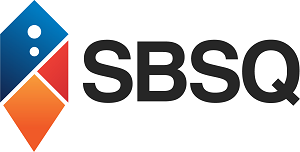Are you looking for a business model with a low cost and simple structure? Dropshipping must be what you need.
This kind of system is popular these days. It allows you to start up your business with only $100. How can it be possible?
We will show you how to start a dropshipping business to find out the answer. Let’s check the following six steps to discover!
What Is A Dropping Business? How Does It Work?
Dropshipping is a system where the retailer never owns the products.
Instead, the retailer purchases the item from a third-party provider, who then delivers the item straight to the end user.
Hence, the online retailer effectively promotes the item for the provider and artificially increases the price of that item so that they can earn a profit without ever seeing, storing, or shipping the item.

Please check its process below to picture how the system really works:
- Stage 1: The retailer collects the products on their marketplace, often a website. Yet, the retailer doesn’t store or have any of the products. The wholesaler or supplier holds the products instead.
- Stage 2: A client orders one product from the drop shipper’s website. The merchant will receive a notification about it and forward the order to the wholesalers.
- Stage 3: The supplier receives the order and ships the product to the customer using the drop shipper’s title.
So how can the drop shipper earn a profit?
For example, if the supplier offers one unit with the price of $1, the drop shipper will advertise it at $3, receiving a profit of $2.
How To Start A Dropshipping Business? 6 Steps To Succeed
Dropping is becoming popular because you don’t have to worry about inventory. If you like this idea, please follow the six steps below to grow your business:
Step 1: Identify your business concept
The most profitable businesses work on an identified concept as the foundation for their brand, marketing, and product line.
Your business concept may develop from your passion or from sales patterns you discover through product analysis and trial and error.
As a dropshipping merchant, you may generate new ideas, test out various ideas, and refine your company as you go.
You can move forward with only a vague idea of your company. The ability to make adjustments at any point is one of the main benefits of the dropshipping model, as you aren’t limited by costly inventory.
You should research products to obtain an understanding of what is working.
Here are some indicators to evaluate a product’s potential, along with useful tools and resources that help you get the information you require:
- Sales Volume: Lists of hot products on Shopify and Amazon.
- Keyword Search Volume: Google Keyword Planner or Ahrefs Keyword Explorer.
- Trend Data: Google Trends.
- Competitor Research: SERPs, social media, and mailing lists.

Step 2: Source your products
Product procurement is one of the more time-consuming yet essential steps in launching a dropshipping service.
You should think about the overall viability of each product and supplier to ensure that your efforts will lead to financial success.
As you evaluate potential items and suppliers, take into account the following criteria:
- Profitability
Your shipping expenses and fees for processing credit cards will slowly reduce your profits. To determine the potential profitability of any product, consider its retail price and recommended pricing.
Remember that you can raise a product’s markup to boost sales and profit or lower it to bring more customers.
- Fame
You can find a statistic for a product’s previous total sales on most dropshipping marketplaces. Even though you can promote less well-liked items, top sellers are typically safer investments.
- Quality
Retailers don’t hold the products. Hence, you will find it hard to determine the product’s quality. For a firsthand experience, you can request a sample.
However, you won’t have enough time to perform this test for all your products.
When determining the quality of a product, most dropshipping sellers focus on sales data and supplier reviews on the market.
- Location
The location of a provider will influence shipping costs and delivery times, which are crucial aspects of the client’s buying decision.
As a result, try to find suppliers who offer ePacket delivery for quick, trackable shipments. Often, you can locate many of them in China.
- Reliability
It’s tricky to evaluate a supplier’s reliability before working with them.
However, most dropship marketplaces have strict vendor policies. You can stop working with a seller who consistently has quality or service problems.
- Return Policy
Try to minimize returns by handling most problems through no-return refunds.
You should examine the return policy of each site because each marketplace works differently.

Step 3: Build your online business
You need an easily navigable, user-friendly, and traffic-generating eCommerce site to establish your dropshipping business.
- Model your business
There are two business concepts: product-focused and content-focused:
Product-focused
These websites use the standard storefront-style layout to sell products as the most straightforward option for inexperienced drop shippers.
You can organize your products by promotion or category, with product pictures, descriptions, and specifications occupying the center part.
Product-focused websites often include a FAQ section detailing delivery, refunds, and other relevant information.
It’s also typical to have an “About Us” page that explains the company’s background and principles.
Content-focused
Some business models profit from establishing a store built around relevant content.
This idea is true for markets with a devoted fan base or demanding prior knowledge, such as infrared saunas.
In content-focused businesses, informative materials are prominent, including blog entries, recipes, video tutorials, and user favorites.
This content elaborates on how to use your products and what features they can offer, improving product descriptions.
- Choose your online platform.
You want a platform to rapidly develop a website with a shopping cart and online payment capabilities.
The model of your business and your strategy for finding suppliers will determine the ideal platform for your business.
You can try the drop-shipped products on Amazon, eBay, or Walmart. But remember that these online markets include high seller fees, strict shipment deadlines, and high customer service standards.
Although many dropshipping merchants succeed on these sites, they are not startup-friendly. So, on your own website, familiarize yourself with your vendors and the procedure before expanding to seller marketplaces.
- Build your website
To build your site, start by setting the framework, which includes configuring payment processing, establishing a domain, and creating a layout.
Don’t forget to refer to the provider’s site FAQs, guides, and other content. Most platforms provide helpful customer service to make this process as simple as possible.
In a dropshipping business, some critical elements might not work similarly. Your website should focus on these areas:
- Shipping Methods
- Customer Service
- Return Policy
- Listing Items

Step 4: Set up your business finance
You must be aware of these financial and legal aspects of your business to grow a legitimate startup:
- Banking
Make sure you create a bank account for your business. After that, add all earnings to it and subtract all expenditures.
Without specialized banking, managing your finances will be problematic. You may get into trouble with the IRS in the case of an audit.
It’s a wise decision to get a company credit card as well. In addition to further dividing your finances, you can earn considerable benefits for all of the vendors’ products.
- Business Structure
You have many options for your business structures, such as LLC, S-corp, or C-corp. They differ in liability protection levels.
If you don’t register your business with your state, it will be regarded as a sole proprietorship by default. This structure is the most common choice for drop shippers.
- Business Licenses
Most businesses must acquire and renew their local business license frequently. Depending on your products and location, this requirement could not apply to your business.
- Sales Tax
You must consider both your own tax for stuff you buy from suppliers and the consumption tax your consumers will pay when they shop at your dropshipping website.

Step 5: Develop marketing campaigns
Each of the recommended marketing strategies below is suitable for startups and has a high potential for boosting sales:
- Social Media: Establish company accounts on Facebook, Twitter, Instagram, and Pinterest. Then, use them to advertise your products through audience interaction and shoppable articles.
- Influencer Marketing: Influencer marketing is an economical, flexible, and efficient method of reaching your targeted audience.
- Email Marketing: Email is a vital channel for promoting your store because almost all buyers check their mailbox every day.
- Paid Ads: Pay-per-click marketing is a terrific approach to increase the visibility of your business to a key demographic. The main channels are Google Ads and Facebook Ads.
- SEO: Since 93% of online experiences start with a search engine, search engine optimization (SEO) strategies are essential for the success of eCommerce.
- Content Marketing: Blog posts on your niche, YouTube channel, or the introduction of unique infographics to your website are all examples of content marketing.

Step 6: Run your business
The key responsibilities of operating a dropshipping business are managing orders, providing customer service, and doing some basic accounting.
- Managing Orders: The dashboard of your platform will showcase new, processing, and delivered sales; if any orders remain unshipped for a long time, check with a vendor query.
- Customer Service: Follow closely the channels of communication provided on your platform’s “Contact Us.”
- Accounting: Keep tabs on the money coming into and going out of your business and your system charges and license renewals.
- Analyze And Refine: Your platform probably has analytics that converts the data from your business into understandable, usable reports to help improve.

Pros And Cons Of Starting A Dropshipping Business
Dropshipping has advantages and disadvantages. You just have to weigh them to see if they achieve the perfect balance for your requirements and situations.
Pros:
- Getting started with a dropshipping business is comparatively simple.
- You don’t have to buy and keep the products.
- With internet access, running a dropshipping business is possible from almost anywhere, making it an ideal option for anyone who values flexibility.
- There is a far wider selection of products because you don’t have to stock up on the products you sell.
Cons:
- The model allows you to respond to and adjust to buying patterns but also leaves you open to unforeseen stock shortages.
- Making a reputation for yourself is challenging because of the fierce competition.
- Competition for commercial advertising space is intense. To turn a significant profit, you’ll need to put in a lot of work defining yourself from the market.
Frequently Asked Questions
1. Is dropshipping profitable?
Yes, dropshipping can be successful and profitable since you are not in charge of production, inventory, or delivery.
Dropshipping is a low-risk model that doesn’t have the high overhead that a supplier would typically have. With the right vendors, you may earn a decent profit margin.
2. How much can beginner drop shippers make?
Earnings depend on the company’s sales volume and profit margin, which vary from retailer to retailer. With the proper marketing strategy, a drop shipper might earn up to $100,000 in their first year.
3. What do I legally need to start my dropshipping business?
You must obtain your state’s sales tax ID, often known as a reseller’s license. Any goods you sell may require you to charge, gather, and pay the sales tax.
Conclusion
Building a dropshipping business is challenging as you need a wide range of knowledge and skills. However, with proper preparation, you will have a profitable platform.
Hopefully, you will find this article helpful. For any further information, please feel free to ask. Thank you for reading!

